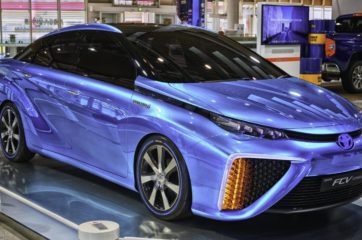by SEREEN SUMNER COMMUNICATIONS DIRECTOR
Every industry contributes to the world’s carbon footprint in its own way. However, the fashion industry is often overlooked as one of the primary polluters in the world, second only to oil. Various well-known brands have introduced eco-friendly clothing lines and manufacturing processes to combat the issue –– H&M, Zara, and Levis to name a few. As New York Fashion Week finishes up, it’s the perfect time to explore sustainable fashion trends and ethical production practices redefining the industry and tackling its carbon emissions.
POLLUTION IN THE FASHION INDUSTRY
The face of pollution is not limited to dirty fossil fuels or raw sewage in our waterways. The fast fashion we buy each season is creating a negative impact on our planet– The clothing production and selling process is often convoluted; the process entails textile manufactures, various suppliers, raw materials, quality checks, global and domestic shipping, retail, and the inevitable discarding of the item. Calculating the overall footprint of this industry is a feat of its own; a comprehensive analysis would take into account not only the clothing production process, but also the farming, harvesting, extraction, and manufacturing needed to create the materials.When examining the lifecycle of clothing there is a shocking amount of emissions and waste from both the production and disposal stage. It would be a monumental task to calculate the overall emissions of any single product. However, there are clear steps that industry players can make to reduce this footprint. Items that are made from reused or recyclable material all make a difference in creating a circular economy.
A FUZZY SITUATION
Over half of the textiles and clothing made in the world is cotton based, the fashion industry is a large consumer of the 40 billion pounds produced each year. To grow one kilogram, the crop demands 20,000 liters of water. To put this figure into perspective, that same kilogram of cotton produces enough fabric for one t-shirt and a pair of jeans. The crop also requires an exorbitant amount of chemicals contributing to 11% and 24% of pesticide and insecticide sales, respectively. Genetically engineered strains of the crop can reduce the need for these chemicals, but the sheer quantity of cotton required to meet industry demand still poses a big problem. Traditional farming methods are the culprit behind the destruction of large-scale ecosystems in central Asia, Australia and Mexico. More than 120 million trees are cut down each year to make our clothing. This act creates a snowball effect, because trees are known to naturally sequester carbon. You can lower your personal carbon footprint by looking for certified organic fabrics, buying less fast-fashion pieces, looking for durable timeless pieces, or buying thrifted items.
IS YOUR WARDROBE TO DYE FOR?
The dyeing process for clothing also uses a substantial amount of water, with the average t-shirt requiring approximately 18 liters of water. During the dyeing process, up to 80% of pigments are retained and the remainder are flushed out, causing 40,000-50,000 pounds of dye to enter into the water system each year. Over the last few decades synthetic dye standards in the US and Europe have become stricter to limit carcinogens and chemicals from entering our waterways. However, there are still companies using those harsh chemicals during the dyeing process.
ECO-FRIENDLY BRANDS GETTING IT RIGHT
Consumers may assume that eco-friendly fashion items will cost significantly more money to purchase in comparison to cheap and convenient fast fashion. This assumption is well-reasoned due to the lack off economies of scale for eco-friendly materials and manufacturing. However, there are brands producing high-quality and on-trend pieces that are affordably priced. These sustainable items will also provide more wears and comfort than your average fast fashion piece. Listed below are brands that we consider to be leaders in the eco-friendly fashion realm:
STYLE SAINT


Focuses on delivering luxury fashion pieces that can be worn year round as well as year to year. The company uses 99% less water than and paying 2000% higher wages than the industry standard. Each item featured on their the amount of ethical labor, yards of fabric, and the total amount of water saved for every single item.
UNITED BY BLUE


Their mission is to clean up water pollution. Each product sold results in United Blue removing one pound of trash from the oceans, beaches, rivers, streams, creeks, or lake. So far the company has removed 1,051,079 pounds of trash removed and has hosted 207 cleanups.
MATA TRADERS


A design driven company that unites uncommonly vivacious styles with ethical work conditions and fair trade practices. The fabrics used are sourced from artisans in India and Nepal. The crafters are primarily woman, thus supporting female artisans.
 SEREEN SUMNER Communications Director
SEREEN SUMNER Communications Director
Sereen is a young professional from Maryland with experience in Communications, International Business, and Product Management. She obtained a BBA from Roanoke College and an MSc in International Business from Hult International Business School. During her undergraduate career she studied abroad in Osaka, Japan, interned in London with Bedfordshire’s City Council, and Rackspace Hosting in Blacksburg Virginia. She recently consulted for Siemens to construct a renewable energy plan and led her team in presenting their 2025 vision for a energy disruption model. During her free time, she enjoys sightseeing, playing the violin, and spending time with friends.










